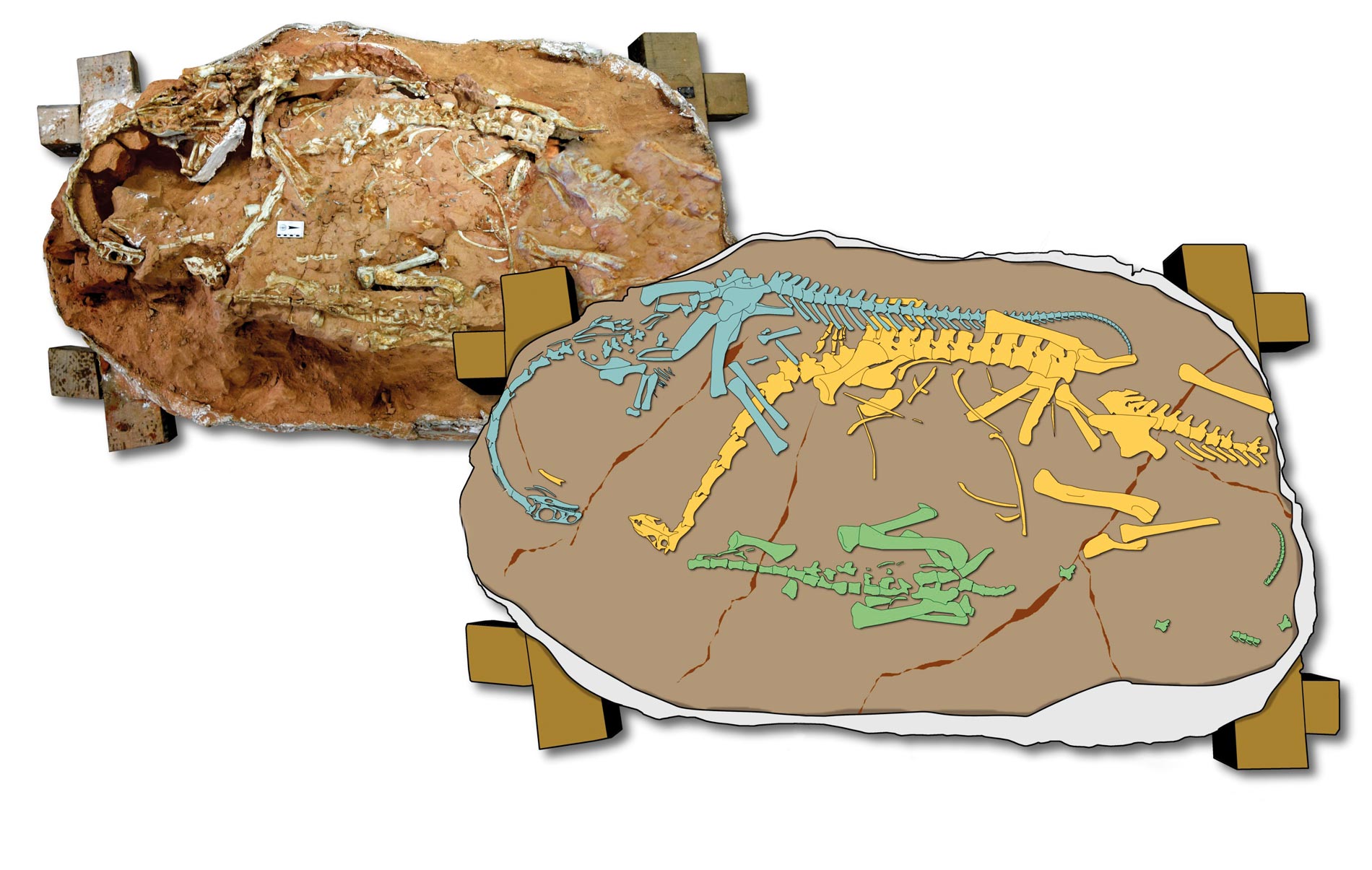The fossils of three specimens of a new genus and species of herbivorous dinosaur, given the name Macrocollum itaquii, have been found in the state of Rio Grande do Sul. Identified by paleontologists from the Federal University of Santa Maria (UFSM) and the University of São Paulo (USP) in Ribeirão Preto, they are the oldest long-necked dinosaurs ever discovered, at 225 million years old (Biology Letters, November 21). From head to tail, the species averaged 3.5 meters (m) in length, with the neck accounting for approximately 1 m. This physical feature would have facilitated access to higher vegetation, a source of food that smaller animals could not reach. “Two of the three fossils were very well preserved and practically complete, including the skulls,” says the lead author of the article, Rodrigo Temp Müller, who is studying a PhD in animal biodiversity at UFSM. “The fact that they were found together suggests these animals lived in herds.” According to USP paleontologist Max Langer, who was another author of the study, these are probably the best-preserved dinosaurs ever found in Brazil, anatomically speaking. The new species belongs to the sauropodomorpha group, encompassing the earliest forms of herbivorous dinosaurs, which emerged just over 230 million years ago, at the same time as carnivorous dinosaurs appeared. Two other sauropodomorphs that lived just before M. itaquii—Buriolestes schultzi and Bagualosaurus agudoensis—have been found in the same region, measuring 1.5 m and 2.5 m respectively. According to the latest study, sauropodomorphs increased in size by 230% over a period of 8 million years between 233 million and 225 million years ago, and their neck lengths doubled.
Republishpaleontology
225-million-year-old long-necked dinosaurs

Illustration of rock containing three Macrocollum Itaquii dinosaur skeletons
Rodrigo Müller / UFSM

